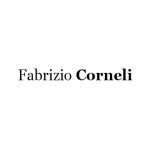Classic / Competitor analysis, Customer experience, Market research, marketing communications, Mohamed Ogbi, Proimpact, Proimpact Marketing Consultancy / October 14, 2016
Positioning – A strong position is a direct result of a strong brand
Positioning is effective only is fully researched. You must know- not think you know -how the consumer thinks and feels about the product or service.
Positioning
Positioning relates to how the consumer thinks about the rates your product or service against the competition. Positioning requires highlighting target-relevant benefits for the products features. Benefits must be tied to uses that will enhance the targets lifestyle or image. The position of a brand is sometimes confused with brand image; a brands position in the mind of the consumer is created via advertising and promotion, and brand image created based on experience.
Positioning is effective only is fully researched. You must know- not think you know -how the consumer thinks and feels about the product or service. Ask yourself a few questions: who is more likely to use the product or service? What are the benefits to your target or using the product? How does the product stand up against its competition: what makes it unique; what features are duplicated? What if the perceived value of the product within the market? How will the product be made available to the target? Does it come in different sizes, colors, or price ranges? Is it relevant to the target?
One of the ways to break through the advertising clutter is to find out what makes your clients product or service unique and position the product directly against the competitions image. If communication efforts can prove your client’s product is bigger, faster, or longer lasting than the competing brand, it is more likely to be noticed and remembered.
It’s important to understand that your client’s products is probably not the only producer of its kind; it is most probably one of many virtually identical products in the category. To make it stand out from the crowd you must carve out a niche or position for the product. Today, the majority of the products are no longer mass advised, but rather, as discussed earlier, advertising vehicles are more selectively targeted to eliminate media waste.
A strong position is a direct result of a strong brand. This position is built up over a period of time based on reliability of performance. Branding gives a product or service an air of exclusivity and a unique identity from its competitors within the product category.
Successful, memorable advertising beginning with an established position. Once a product’s identity is established and accepted, consumers remember it and use it as a measurement device for all other competitors within the category. Measurement may be based on quality, convenience, reliability, or service to name just a few.
Brand image helps to determine the products position. This is because positioning deals with who the target audience is, what they currently think about the product, who the competition is and what the target thinks about them, and finally what features are relevant to the target. Once you know this, you can determine and communicate positioning strategies.
In this article“how to position your product”, Luc Dupont outlines the seven ways to position a product or service:
- Being at anything is a short-lived boast, but if your client’s product is, you can use it to set the product up as unique.
- Low price. Less expensive does not necessarily mean lesser quality. A low price can be a selling point if the consumer is convinced of the products value.
- High price. More expensive does not mean high quality, so the target must be convinced an expensive product is worth the investment.
- Sex of the consumer. Not all products are made for both sexes. There are razors especially designed for women and others designed especially for men; fragrances are also gender based, such as colognes for men and perfumes for women.
- Age of consumer. Few products appeal to consumers of all ages, so it is important to consider the age of your target audience. Baggy jeans are for teens; Dockers are for the upwardly mobile professional. A Volkswagen beetle appeals to a younger audience, whereas a Mercedes reflects status and or/ success.
- Time of day the product should be used. Some products are intended for use at specific times of the day, such as cereal for breakfast, soup for lunch, frozen entrees for dinner, or popcorn as a late-night snack.
- Distribution channels. This relates to how the consumer will receive the product. Examples include ordering though a website a direct marketing efforts delivered through the mail versus the need to visit a show room.
Al Ries and Jack Trout, specialists in positioning, sum it up this way: “In the communications jungle out there, the only hope to score big is to be selective, to concentrate on narrow targets, practice segmentation. In a word, positioning.”
To learn more contact as at info@proimpact.it











